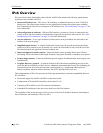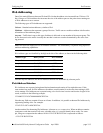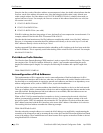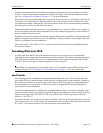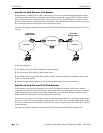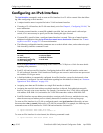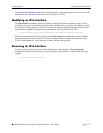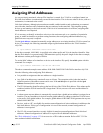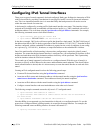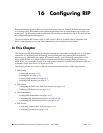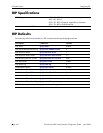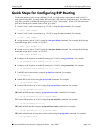
Assigning IPv6 Addresses Configuring IPv6
page 15-12 OmniSwitch 6600 Family Network Configuration Guide April 2006
Assigning IPv6 Addresses
As was previously mentioned, when an IPv6 interface is created for a VLAN or a configured tunnel, an
IPv6 link-local address is automatically created for that interface. This is also true when a device, such as a
workstation, is connected to the switch.
Link-local addresses, although private and non-routable, enable interfaces and workstations to communi-
cate with other interfaces and workstations that are connected to the same link. This simplifies getting
devices up and running on the local network. If this level of communication is sufficient, assigning addi-
tional addresses is not required.
If it is necessary to identify an interface or device to the entire network, or as a member of a particular
group, or enable an interface to perform routing functions, then configuring additional addresses (e.g.,
global unicast or anycast) is required.
Use the ipv6 address command to manually assign addresses to an existing interface (VLAN or tunnel) or
device. For example, the following command assigns a global unicast address to the VLAN interface
v6if-v200:
-> ipv6 address 4100:1000::20/64 v6if-v200
In the above example, 4100:1000:: is specified as the subnet prefix and 20 is the interface identifier. Note
that the IPv6 address is expressed using CIDR notation to specify the prefix length. In the above example,
/64 indicates a subnet prefix length of 64 bits.
To use the MAC address of an interface or device as the interface ID, specify the eui-64 option with this
command. For example:
-> ipv6 address 4100:1000::/64 eui-64 v6if-v200
The above command example creates address 4100:1000::2d0:95ff:fe12:fab2/64 for interface v6if-v200.
Note the following when configuring IPv6 addresses:
• It is possible to assign more than one address to a single interface.
• Any field of an address may contain all zeros or all ones. The exception to this is that the interface
identifier portion of the address cannot end in zero. If the eui-64 option is specified with the ipv6
address command, this is not an issue.
• The EUI-64 interface identifier takes up the last 64-bits of the 128-bit IPv6 address. If the subnet prefix
combined with the EUI-64 interface ID is longer than 128-bits, an error will occur and the address is
not created.
• A subnet router anycast address is automatically created when a global unicast address is assigned to an
interface. The anycast address is derived from the global address by adding an interface ID of all zeros
to the prefix of the global address. For example, global address 4100:1000::20/64 generates the anycast
address 4100:1000::/64.
• Devices, such as a PC, are eligible for stateless autoconfiguration of unicast addresses in addition to the
link-local address. If this type of configuration is in use on the network, manual configuration of
addresses is not required.
• IPv6 VLAN or tunnel interfaces are only eligible for stateless autoconfiguration of their link-local
addresses. Manual configuration of addresses is required for all additional addresses.
See “IPv6 Addressing” on page 15-5 for an overview of IPv6 address notation. Refer to RFC 3513 for
more technical address information.



